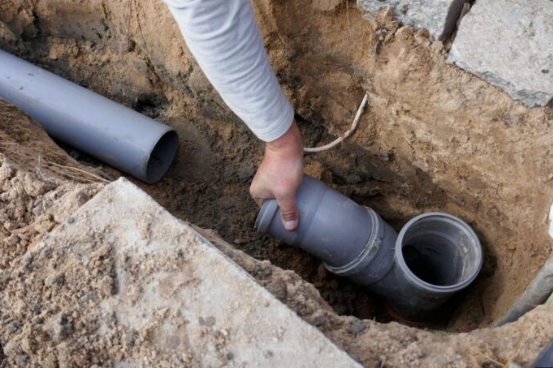
Factors that affect the price of replacing your sewer line
Maintaining the infrastructure of a home is a critical aspect of homeownership, and one of the most essential systems to consider is the sewer line. The sewer line plays a vital role in carrying wastewater away from your home to the municipal sewer system. However, like any other component of a house, sewer lines have a lifespan and may require replacement due to wear and tear, damage, or obsolescence. The cost of replacing a sewer line can vary significantly based on a multitude of factors. In this article, we will delve into the key factors that affect the price of replacing your sewer line.
- Type of Sewer Line:
The type of sewer line you have can greatly influence the cost of replacement. There are two main types of sewer lines: traditional trench sewer lines and trenchless sewer lines. Traditional trench sewer line replacement involves digging a trench along the path of the existing sewer line, removing the old pipe, and installing a new one. Trenchless methods, on the other hand, involve less invasive techniques such as pipe bursting and pipe lining, which can be more cost-effective. Trenchless methods usually require specialized equipment and skilled technicians to fix, which can impact the overall cost.
- Length of the Sewer Line:
The length of the sewer line is a direct factor in determining the cost of replacement. Longer sewer lines require more materials and labor, increasing the overall cost of the project. Additionally, longer sewer lines might be more difficult to access and work on, leading to potential complications that could raise the price.
- Depth and Accessibility:
The depth of the sewer line and its accessibility also affect the cost. Sewer lines that are deep underground or located beneath structures, landscaping, or paved surfaces can be more expensive to replace. Digging through hard surfaces or delicate landscaping requires additional labor and equipment, driving up the overall cost of the project.
- Location of the Property:
The location of your property can have a substantial impact on the cost of sewer line replacement. Costs can vary based on factors such as local labor rates, permit fees, and regional regulations. In densely populated urban areas, replacing a sewer line might be more expensive due to restricted access and the need to coordinate with other utility lines.
- Type of Material:
The material used for the new sewer line can influence the cost. Common materials include PVC, cast iron, and clay. PVC pipes tend to be more affordable and are becoming increasingly popular due to their durability and resistance to corrosion. Cast iron pipes are sturdy but can be more expensive, and clay pipes, while traditional, might require more maintenance and have a shorter lifespan.
- Existing Damage and Repairs:
If your sewer line has already experienced damage or blockages, repairs might be needed before replacement can occur. Additional repairs can significantly add to the overall cost, as they involve identifying and addressing specific issues before the replacement process begins.
- Environmental Factors:
Environmental considerations can also impact the cost of sewer line replacement. If the area is prone to flooding or has a high water table, additional precautions and drainage solutions might be necessary, which can increase costs.
- Permits and Regulations:
Local permits and regulations play a crucial role in sewer line replacement projects. Obtaining the necessary permits and adhering to local guidelines can involve fees and inspections that contribute to the overall cost.
- Additional Costs:
Various unforeseen factors can emerge during a sewer line replacement project, leading to additional costs. These could include unexpected issues like encountering large rocks, difficult soil conditions, or encountering other utility lines.
- Hiring Professional Services:
Opting for professional plumbing services navigate here for your sewer line replacement is highly recommended. While the upfront cost might be higher, professionals bring expertise, experience, and the necessary equipment to ensure the project is completed correctly and efficiently. Attempting a DIY sewer line replacement can lead to costly mistakes and further complications.
In conclusion, the cost of replacing your sewer line is influenced by a multitude of factors that interact and contribute to the final price. From the type of sewer line and its length to the location of your property and the material used, each aspect plays a role in determining the overall cost. By understanding these factors and working with experienced professionals, homeowners can make informed decisions about their sewer line replacement projects and ensure the long-term functionality of their home’s plumbing system.Factors that affect the price of replacing your sewer line







